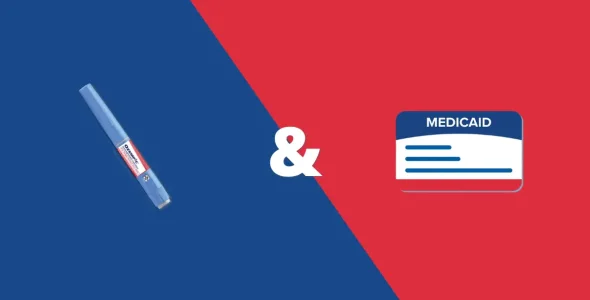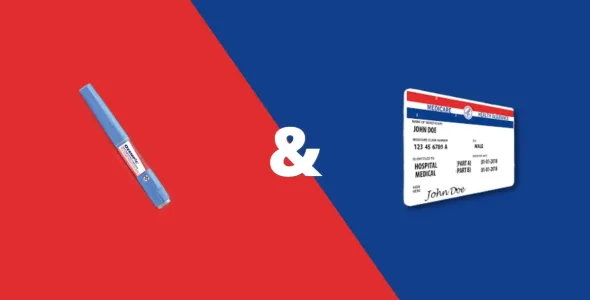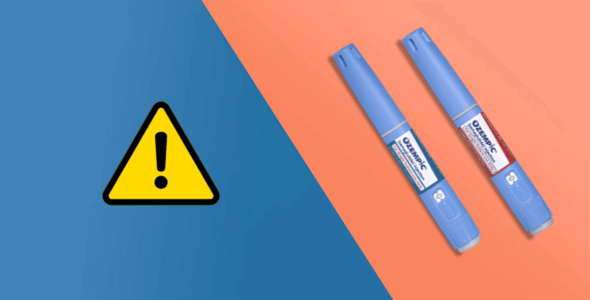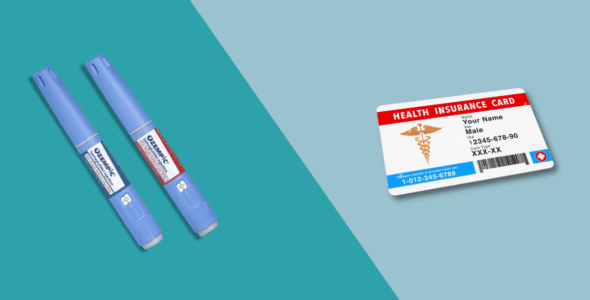Does Blue Cross Blue Shield cover Ozempic?
Key highlights
- Blue Cross Blue Shield may cover Ozempic for type 2 diabetes although coverage varies by the individual insurance plans’ prescription drug coverage and the prescribed indication for Ozempic.
- Most insurance plans won’t cover Ozempic for weight loss, however, they may cover Wegovy which has the same active ingredient, semaglutide.
- Prior authorization is often required to obtain insurance coverage for Ozempic.
- Out-of-pocket costs for Ozempic plan generally depend on where the drug is placed on the drug tier. Higher tiers have higher copays and coinsurance costs.
- The manufacturer’s list price for Ozempic is $968.52 for a 30-day supply, without any insurance coverage, discount and rebates.
- There are several ways to potentially reduce out-of-pocket costs if you do not have insurance coverage for Ozempic.
Ozempic is a popular GLP-1 drug for type 2 diabetes and is also commonly prescribed off-label for weight loss management. It’s an expensive medication with a list price of $968.52 for a 30-day supply without insurance coverage.
Obtaining insurance coverage for Ozempic isn’t always straightforward. It depends on your individual plan’s prescription drug coverage options and the reason you are taking the medication. Most insurance plans cover Ozempic for type 2 diabetes and not for weight loss, although it depends on the specific insurance plan.
Keep reading to find out all you need to know to determine if Blue Cross Blue Shield (BCBS) will provide coverage for Ozempic.
Does Blue Cross Blue Shield (BCBS) cover Ozempic?
The short answer is: it depends. BCBS isn’t a single entity, but rather an association of 34 independent insurance companies and licensees of the Blue Cross Blue Shield Association (which includes Empire and Anthem). Some plans may provide coverage for Ozempic, while some other plans may not. Each insurance company sets its policies and formularies, which can vary by state and specific plans within a state.
Generally, most BCBS plans cover Ozempic, but with certain conditions:
- It’s typically covered for type 2 diabetes treatment.
- Coverage for off-label weight loss is less common and may have stricter requirements, although Wegovy, which has the same active ingredient, semaglutide, may be covered.
- Prior authorization is often required.
- It’s usually placed in a higher drug tier, which can mean higher out-of-pocket costs. Check your plan’s coverage for Ozempic to determine if your specific BCBS plan covers Ozempic.
The main factors to consider are the medical condition Ozempic is being used to treat, prior authorization requirements, and where the medication is listed on the drug tier.
Medical diagnosis
The medical diagnosis, also known as the medical condition identified by your provider, for which Ozempic is prescribed, is essential in determining insurance coverage. Ozempic is approved by the US Food and Drug Administration (FDA) for improving blood sugar levels in people with type 2 diabetes or reducing cardiovascular risk in people with type 2 diabetes and heart disease. When prescribed for the FDA-approved indication, it’s more likely to be covered by insurance.
While commonly prescribed off-label (for an indication than what was approved by the FDA) as a weight loss drug, it is not FDA-approved for weight loss management. Prescriptions that are written off-label are significantly less likely to receive coverage from insurance plans, including plans offered by Blue Cross Blue Shield.
The same manufacturer, Novo Nordisk, has another weight loss drug called Wegovy with the same active ingredient (semaglutide) that is FDA-approved for weight loss and some plans may only provide coverage for Wegovy if prescribed for weight loss and might only provide coverage for Ozempic if prescribed for diabetes.
Prior authorization
Many BCBS plans require prior authorization for Ozempic. This means your healthcare provider must submit a request to your insurance company explaining why you need this specific medication. While the prior authorization process varies by plan, the process typically involves:
- Your doctor submitting clinical information.
- The insurance company reviewing the request.
- Approval or denial of coverage
You can check if your specific insurance plan requires that your healthcare provider submit a prior authorization for Ozempic by reviewing your plan’s drug formulary. If “PA” is written next to Ozempic, that means that prior authorization is required for coverage.
Submitting a prior authorization does not guarantee that coverage will be approved. If your BCBS plan denies the request to cover Ozempic, you can try submitting an appeal.
Drug tier
Ozempic is often placed in a higher drug tier by BCBS plans. Most insurance plans, including BCBS, provide a drug list of its covered drugs in several tiers. Drug tiers determine how much you’ll pay out-of-pocket. Lower tiers have the lowest copays and coinsurance costs, and the higher tiers have the highest copays and coinsurance costs.
BCBC drug tiers may include:
- Tier 1: typically includes preferred generic drugs
- Tier 2: typically includes non-preferred generic drugs
- Tier 3: typically includes preferred brand-name drugs
- Tier 4: typically includes non-preferred brand-name drugs
- Tier 5: typically includes specialty drugs
- Tier 6: typically includes non-preferred specialty drugs
It’s also possible that your BCBS plan may include drug tiers such as:
- Tier 1: generic drugs and lower-cost preferred brand-name drugs
- Tier 2: non-preferred generic drugs or preferred brand-name drugs
- Tier 3: non-preferred brand-name drugs or drugs that have a lower-cost equivalent on a lower drug tier
- Tier 4: specialty drugs
Ozempic is frequently placed in Tier 3 on the BlueMedicare PPO Enhanced plan provided by BlueCross BlueShield of North Carolina and is placed as a Tier 2 Preferred Brand drug on various HMO and PPO plans provided by Blue Shield of California.
How to check if your BCBS plan covers Ozempic
BCBS is a network of independent insurance companies and licensees, including Blue Cross, Blue Shield, Blue Cross and Blue Shield, Highmark, Anthem, CareFirst, and others. Each of these companies has its own coverage options and policies, which are subject to change at any time.
To check if your Blue Cross Blue Shield (BCBS) plan covers Ozempic, you can:
- Check your plan’s formulary: This is the list of drugs covered by your plan. You can usually find this on your BCBS company’s website or by logging into your account. The formulary is updated frequently and can change from month to month so always check the date to make sure you are reviewing the most recent version of the formulary.
- Call the phone number on your insurance card: A representative from your insurance company can provide specific information about your coverage.
- Use the free coverage check tool on the Ozempic website: You can call 1‑844‑Novo4Me (1‑844‑668‑6463) or complete the online form and an agent from Novo Nordisk will get back to you with your coverage information.
If you are unable to obtain coverage for Ozempic from your insurance plan, you can try to obtain coverage for alternative medications such as Wegovy (semaglutide), Mounjaro (tirzepatide), Zepbound (tirzepatide) or Trulicity (dulaglutide).
How much does Ozempic cost?
The list price of Ozempic is $968.52 for a 30-day supply, according to the manufacturer, Novo Nordisk.
It’s possible that you could pay more or less, depending on your insurance coverage, the pharmacy you purchase from, and whether you’re eligible for the Ozempic Savings Card or other savings programs such as the NovoCare Patient Assistance Program.
How to save money on Ozempic
Even with BCBS coverage, the out-of-pocket costs for Ozempic can be considerable. Here are some strategies to help reduce your costs:
- Ozempic savings card: Those with commercial insurance coverage for Ozempic can significantly reduce out-of-pocket costs for eligible patients by using the savings card provided by Novo Nordisk.
- NovoCare Pharmacy: Individuals who are paying out-of-pocket for Ozempic can pay $499 for a 28-day supply through NovoCare Pharmacy, a direct-to-consumer service provided by Novo Nordisk.
- Alternative medications: While there’s no generic for Ozempic, there are other antidiabetic and weight loss drugs available. Your doctor might suggest Ozempic alternatives that are more affordable or have BCBS coverage.
- Patient assistance programs: Novo Nordisk offers an assistance program to eligible individuals who can’t afford their medication to obtain their medication for free.
- Compare pharmacy prices: Costs can vary between pharmacies, even with insurance. Your local retail pharmacy may not provide the lowest prices, and it’s recommended to compare prices at other pharmacies.
- Ask your doctor: Speak with your healthcare professional to see if they can provide any assistance, including calling the insurance company to explain why the drug is medically necessary.
- Federal and state assistance: Medicare Part D enrollees can apply for Medicare Extra Help to help supplement their prescription drug benefits. As well, each state also funds prescription assistance programs for eligible residents.
Bottom line
Navigating BCBS coverage for Ozempic can be tricky, but understanding your plan’s specific policies and coverage options is key. Most plans cover Ozempic for type 2 diabetes, but coverage for weight loss is less certain. Prior authorization is often required, and the drug is typically placed in a higher tier, which can affect your out-of-pocket costs. Always check the most recent version of your plan’s formulary or contact your insurance plan directly to determine coverage options.
Regardless of the circumstances, there are several options for you to save money, which vary based on whether or not you have adequate insurance coverage for Ozempic.
















